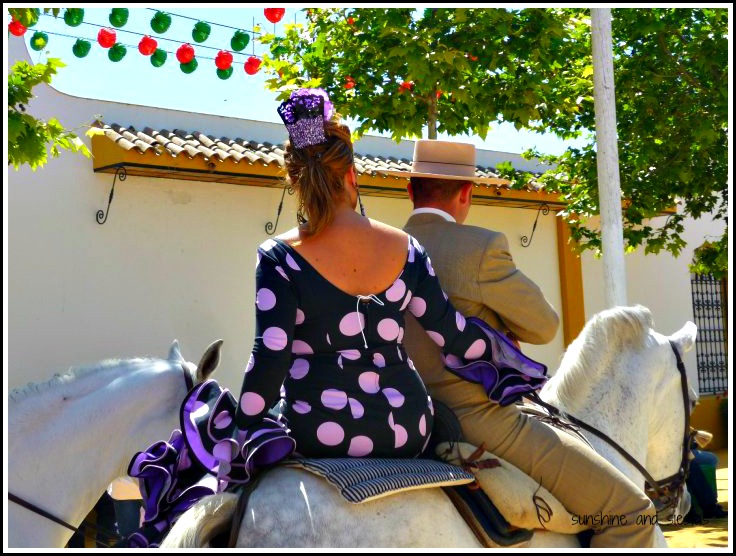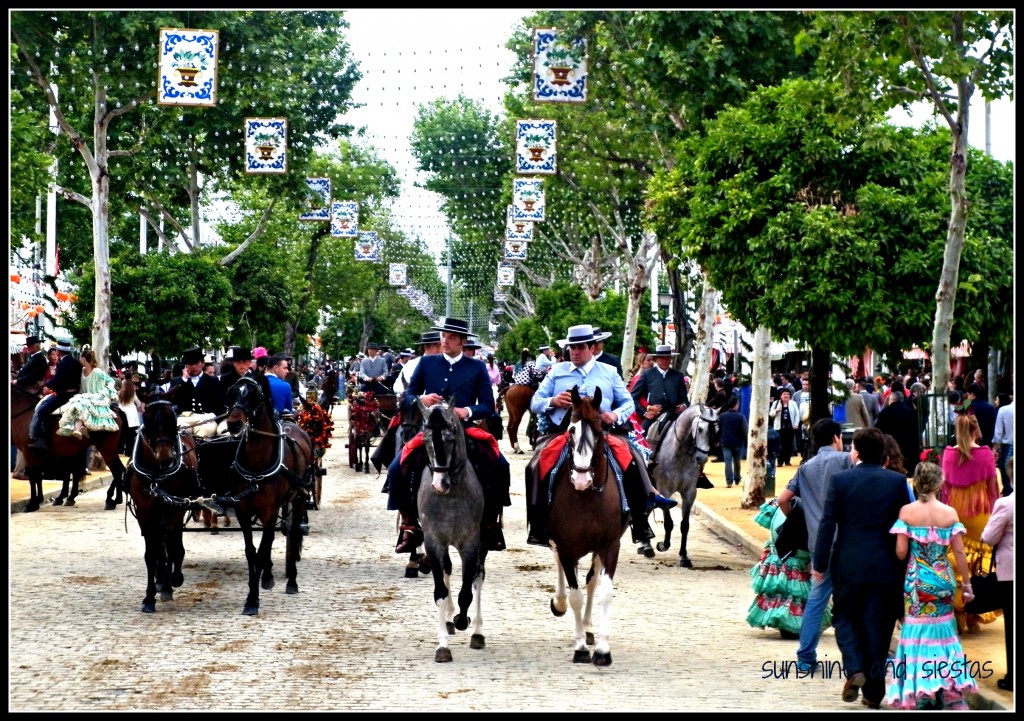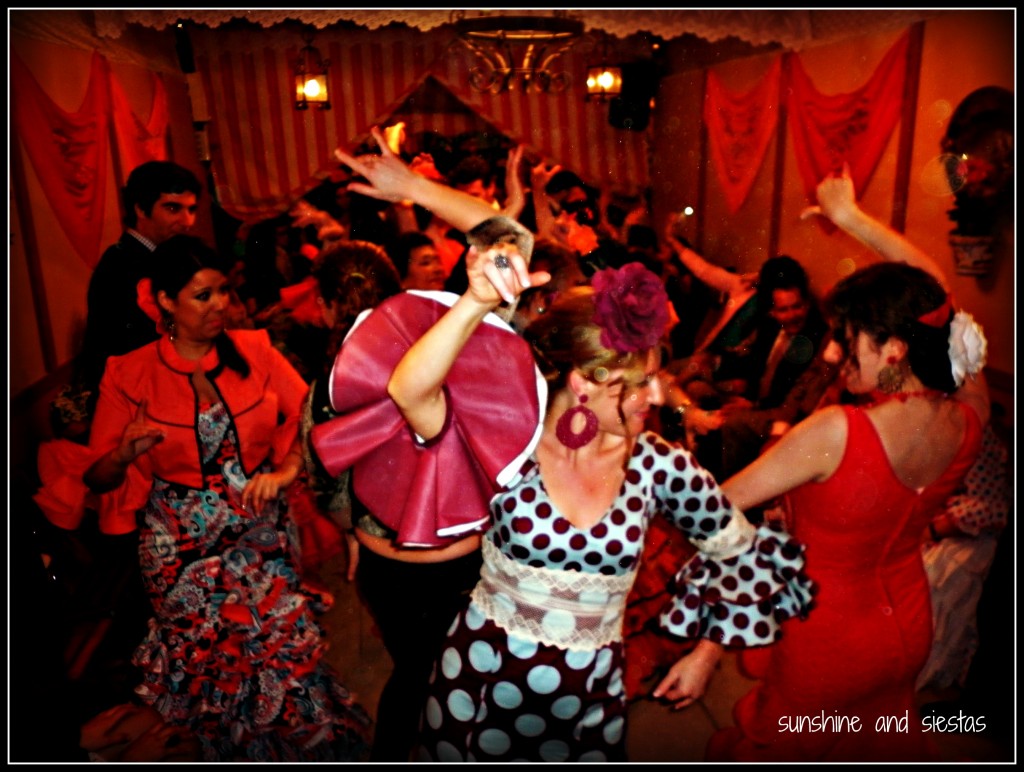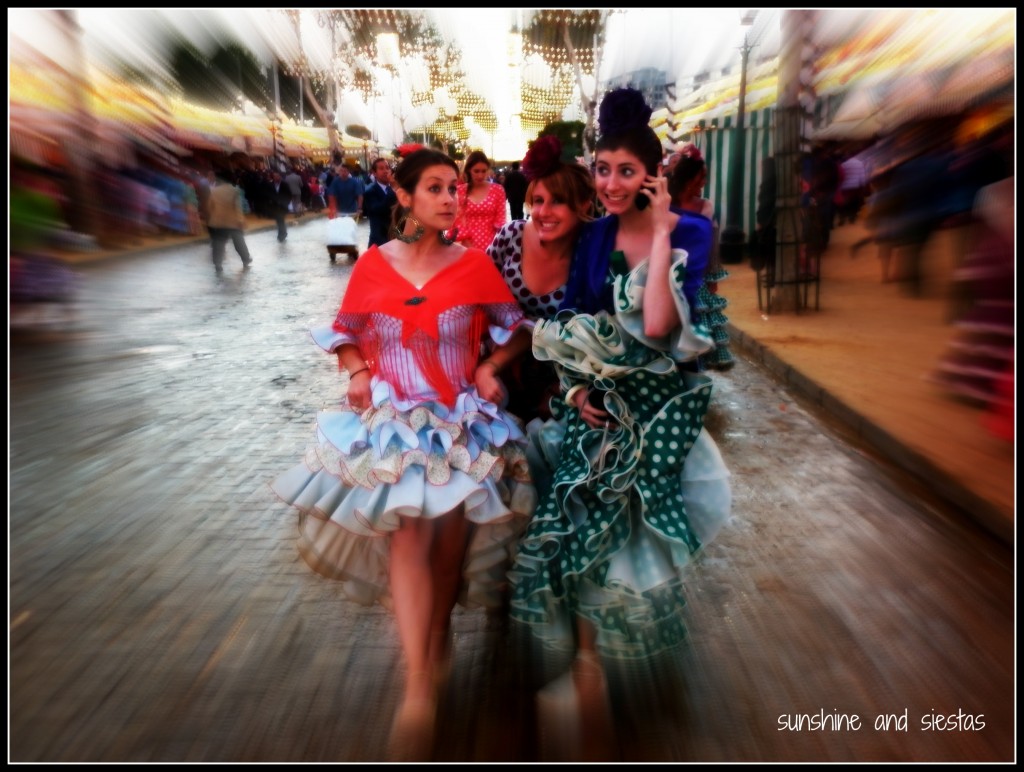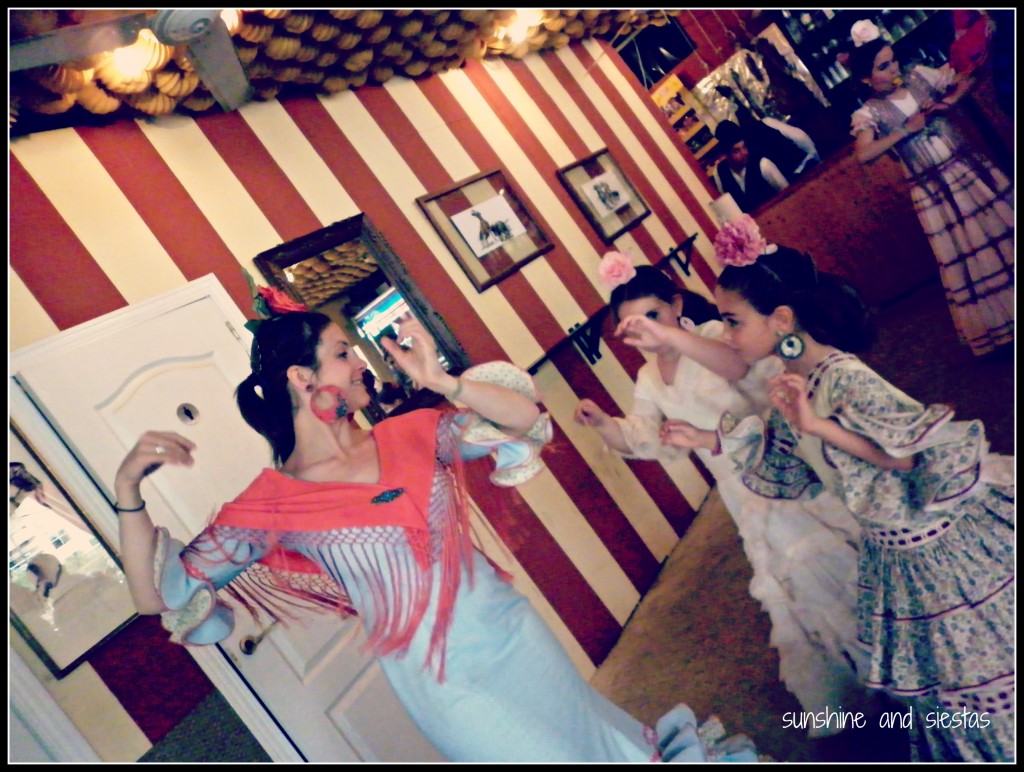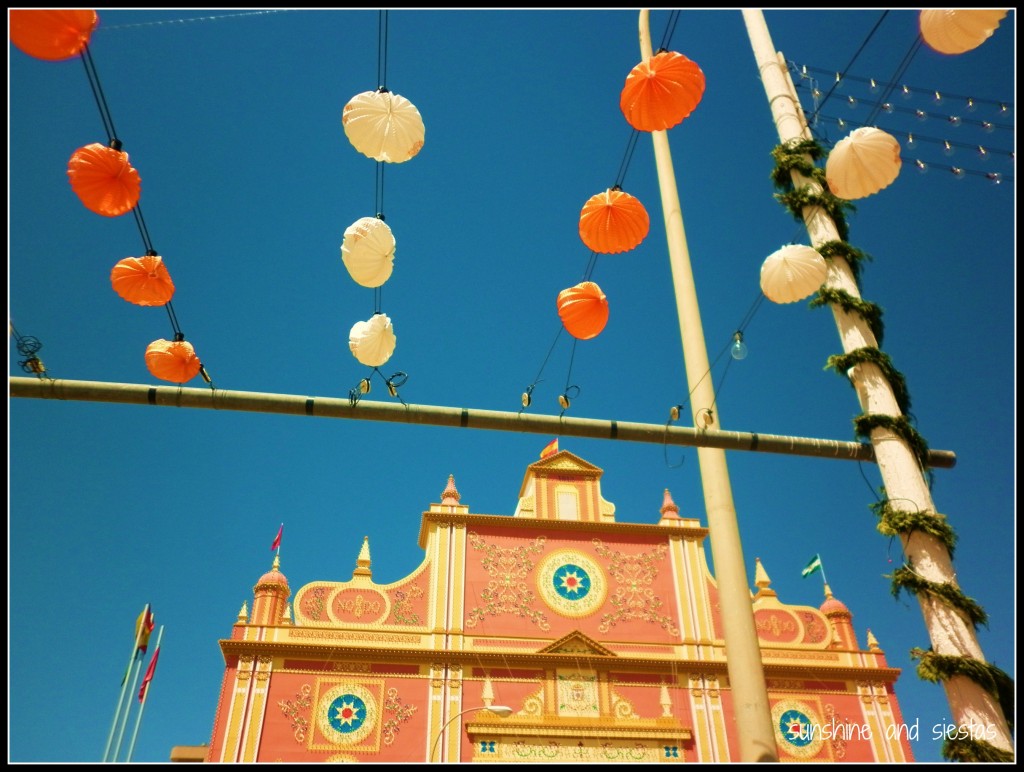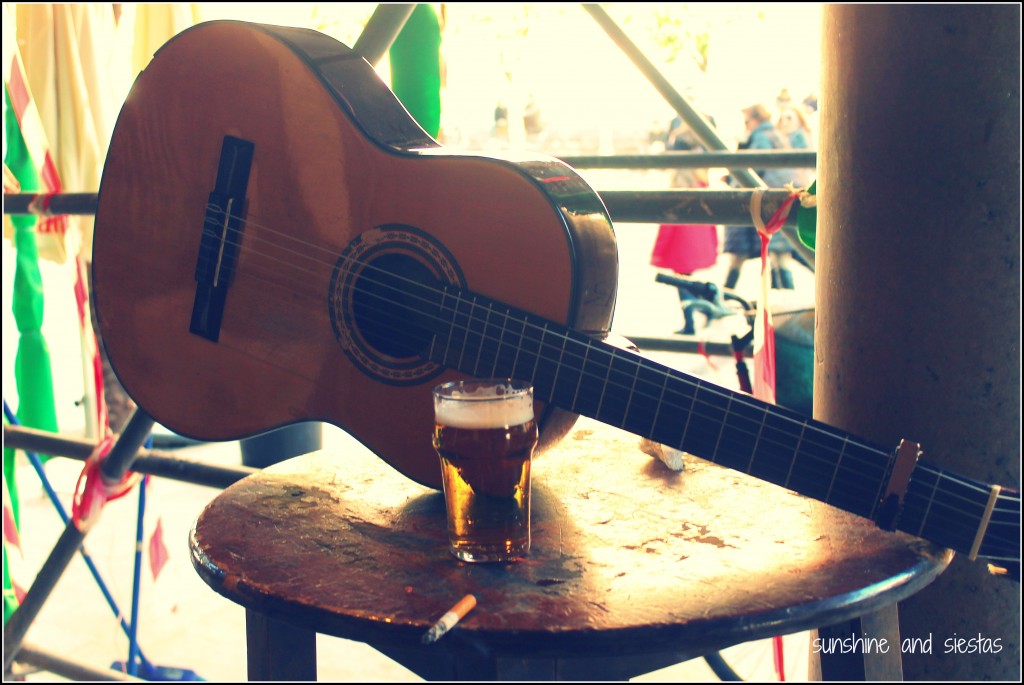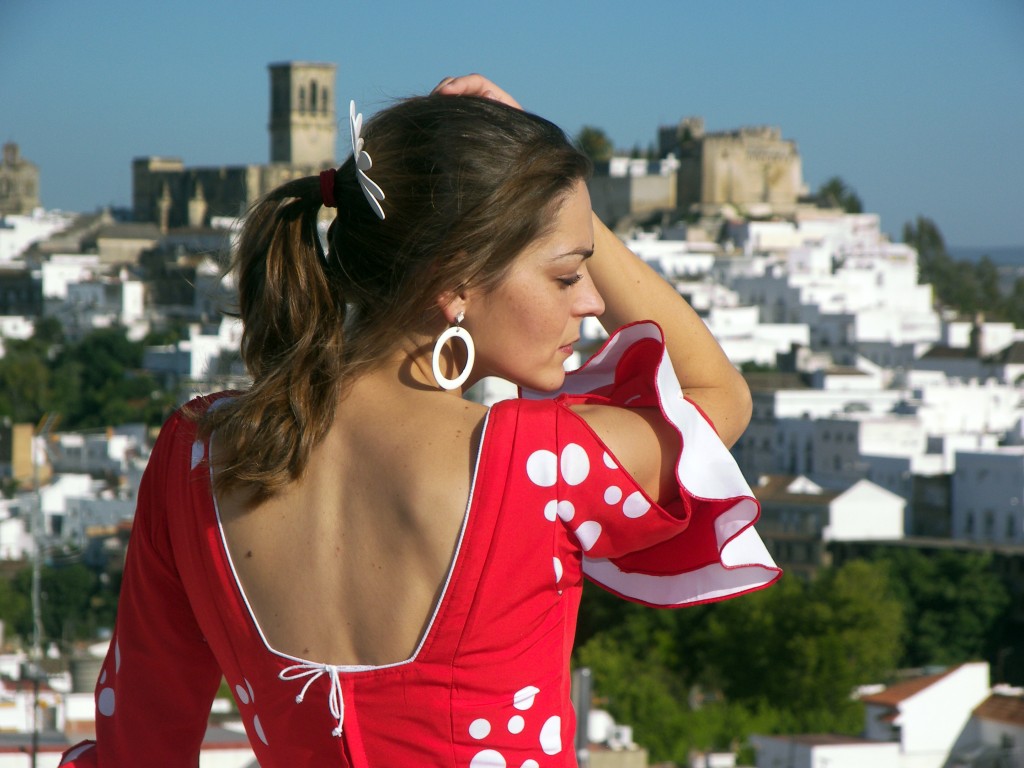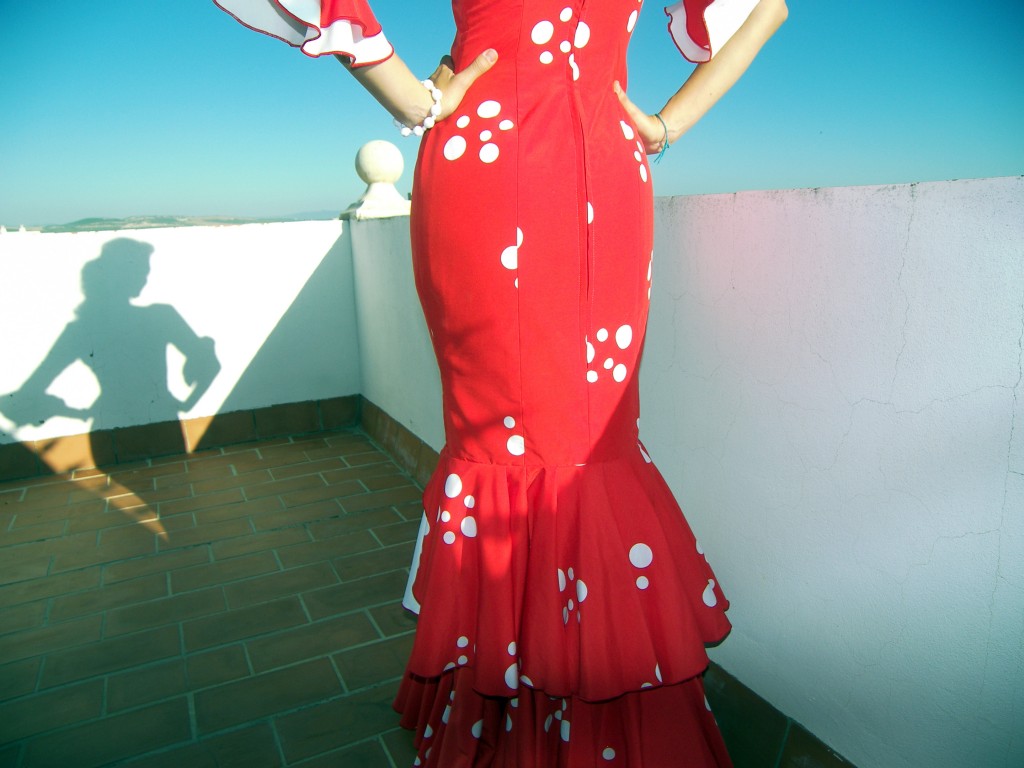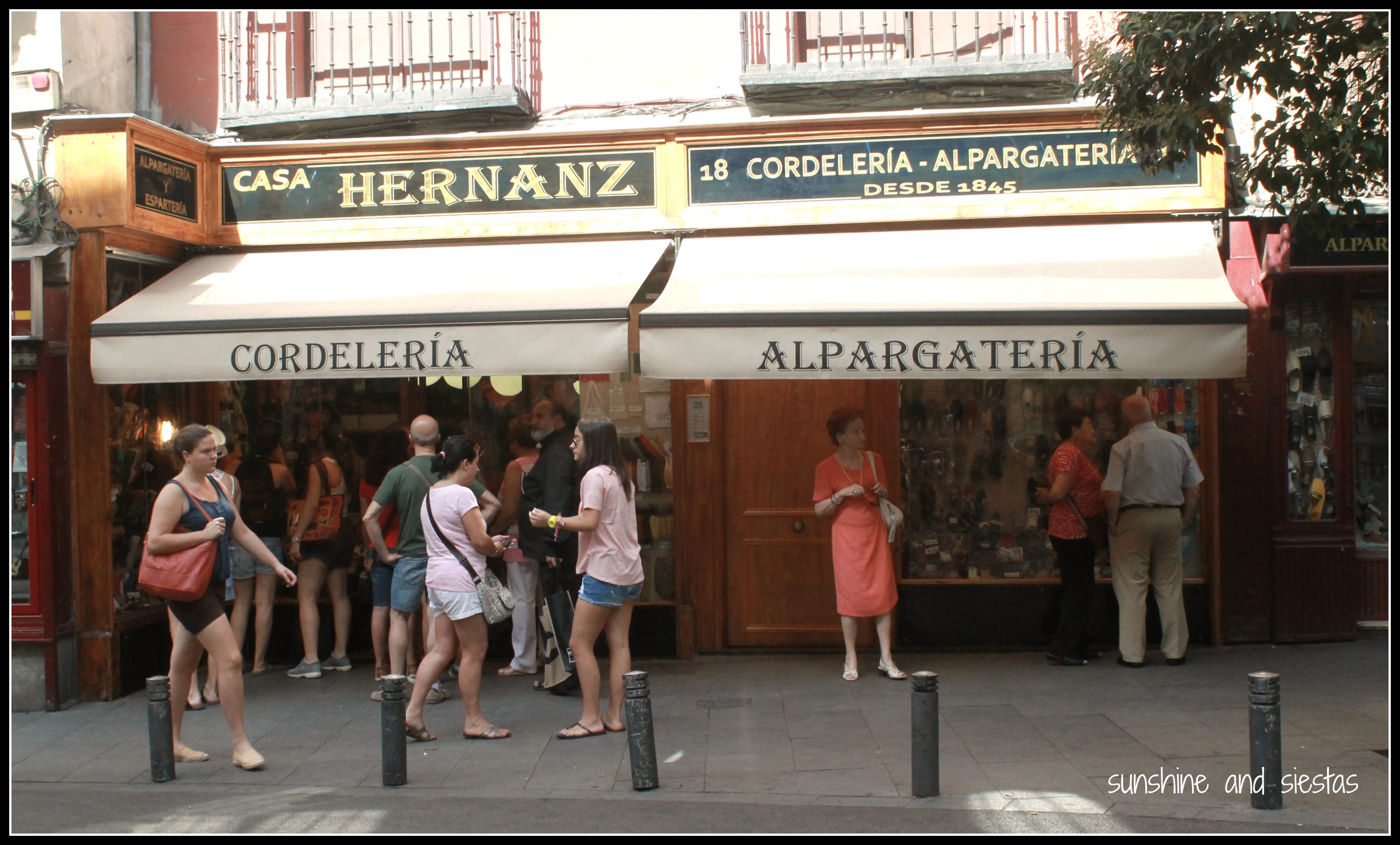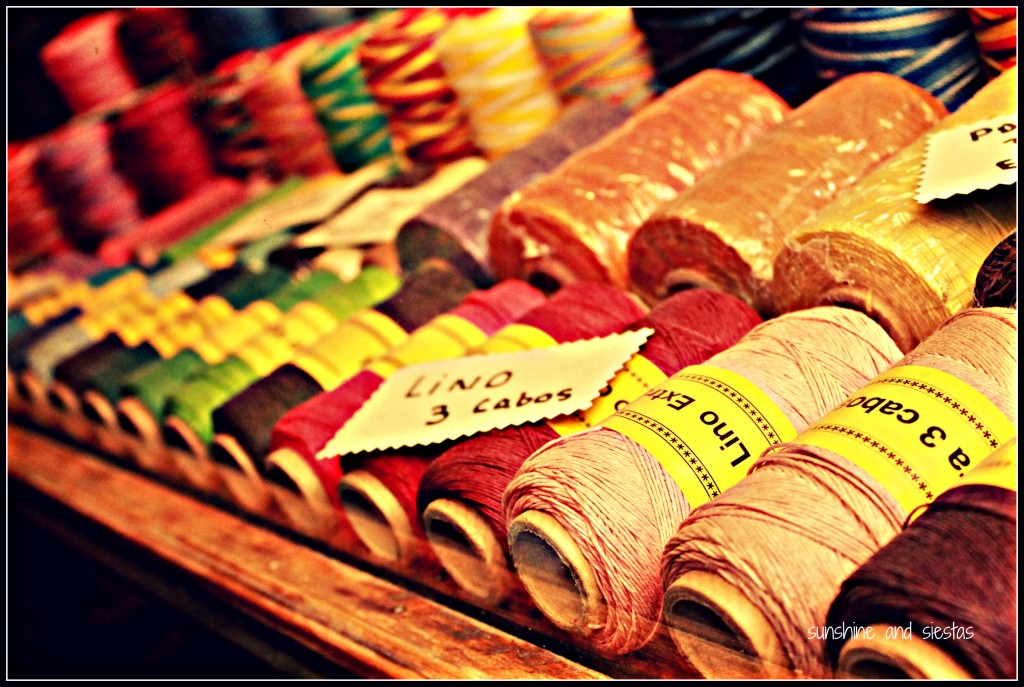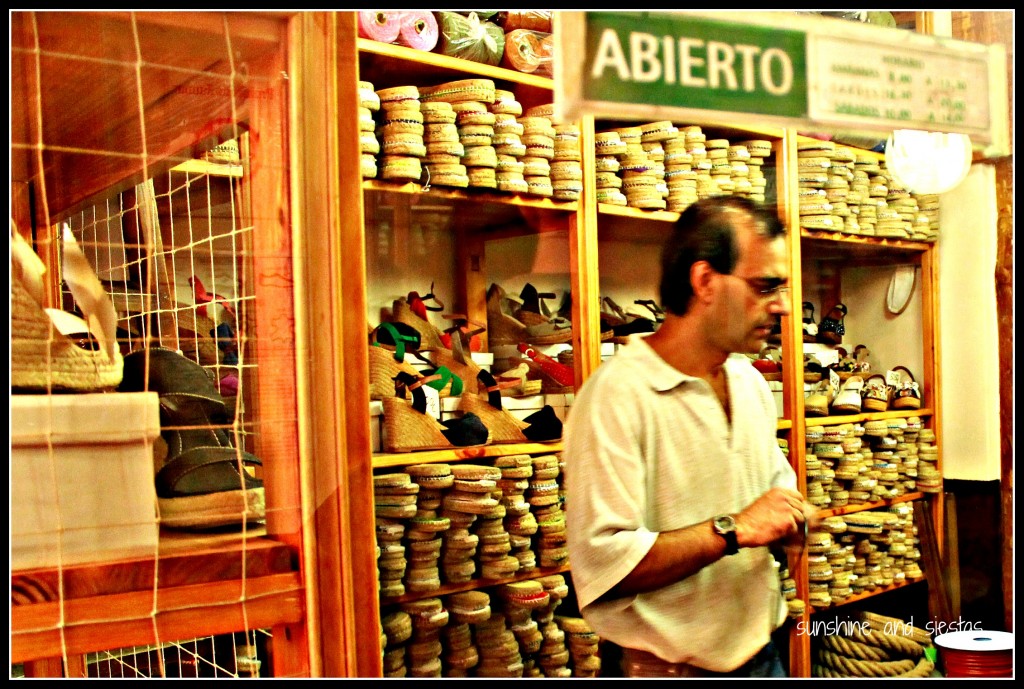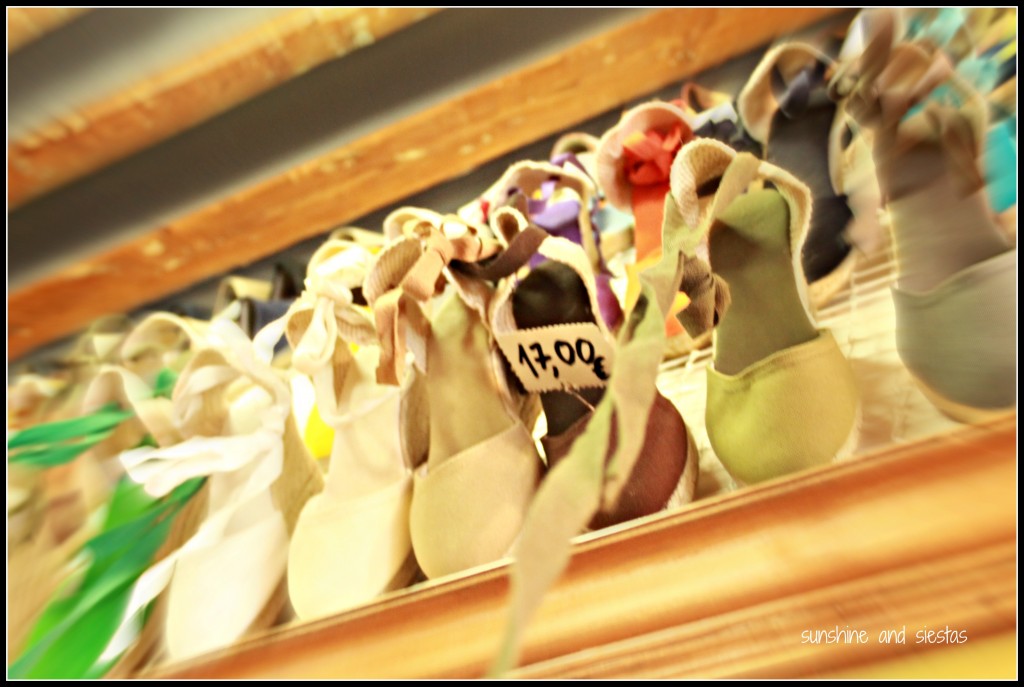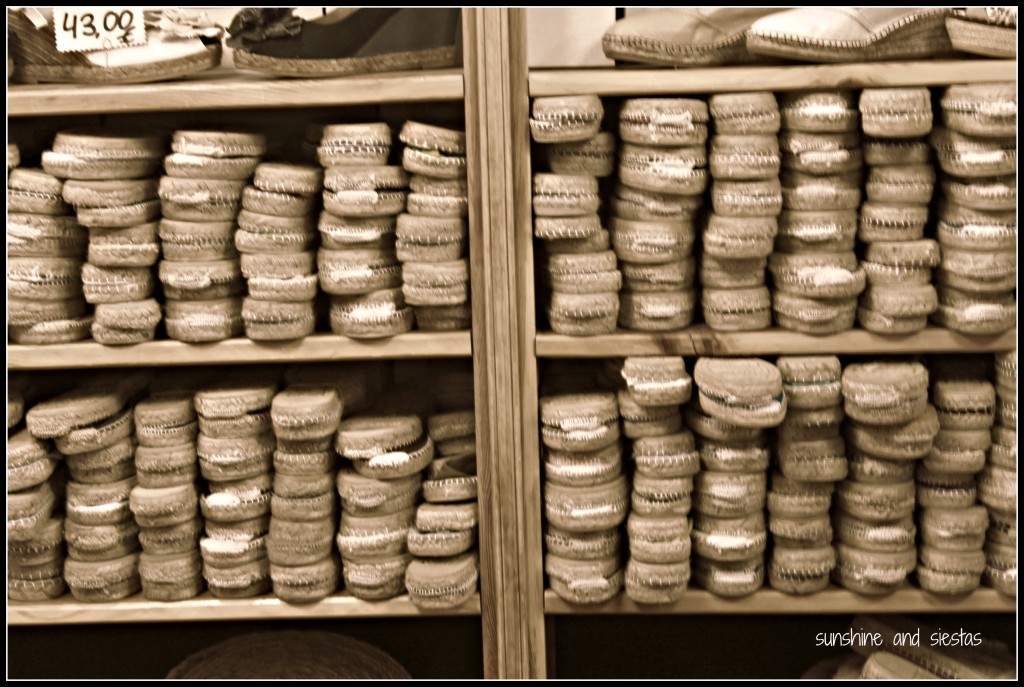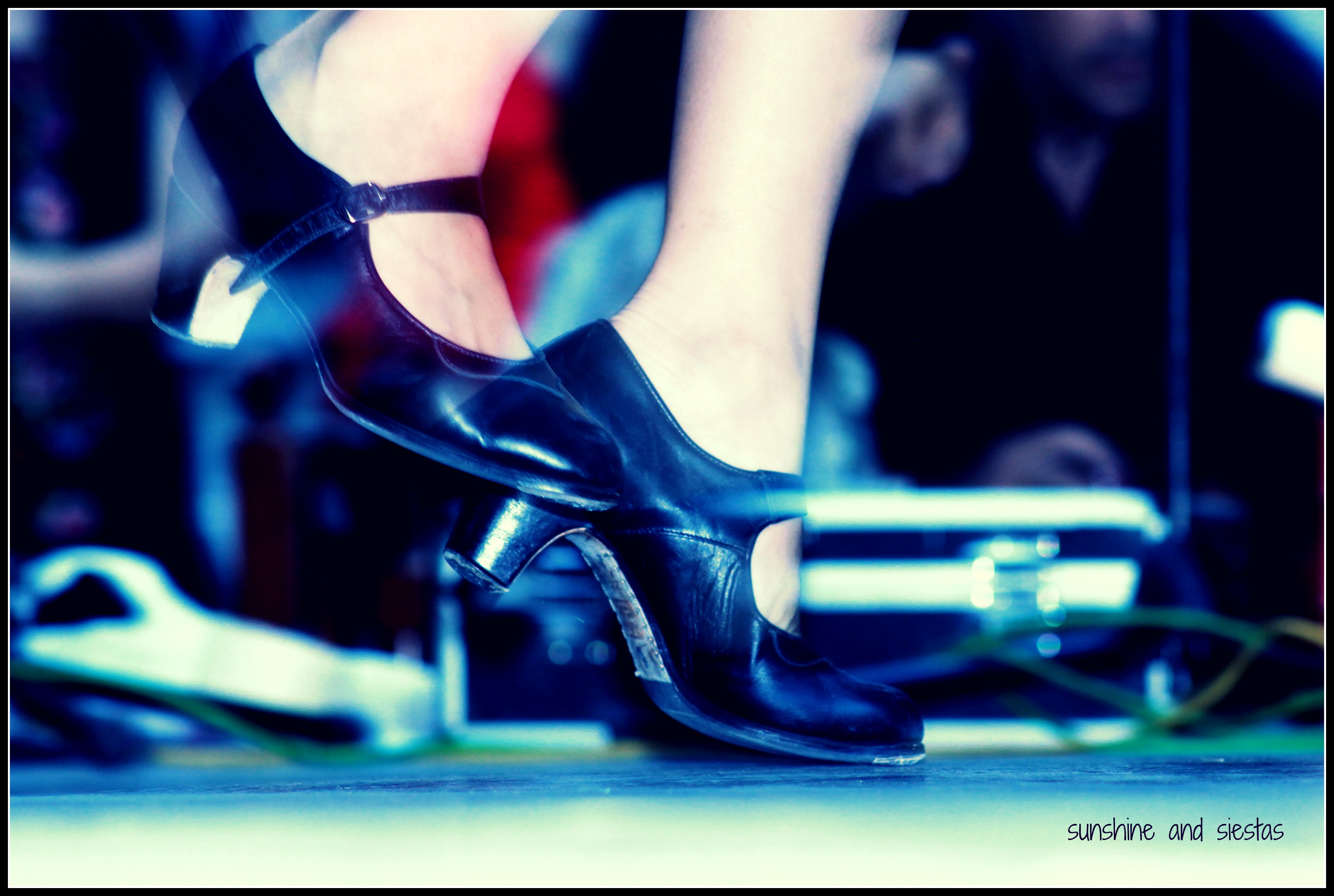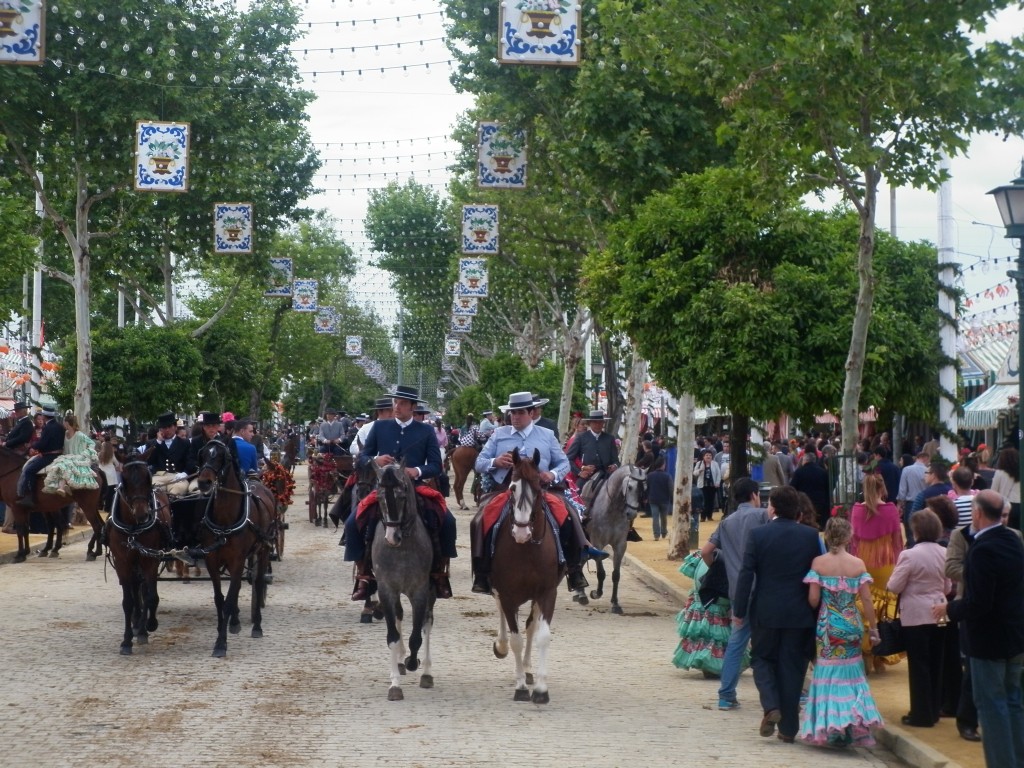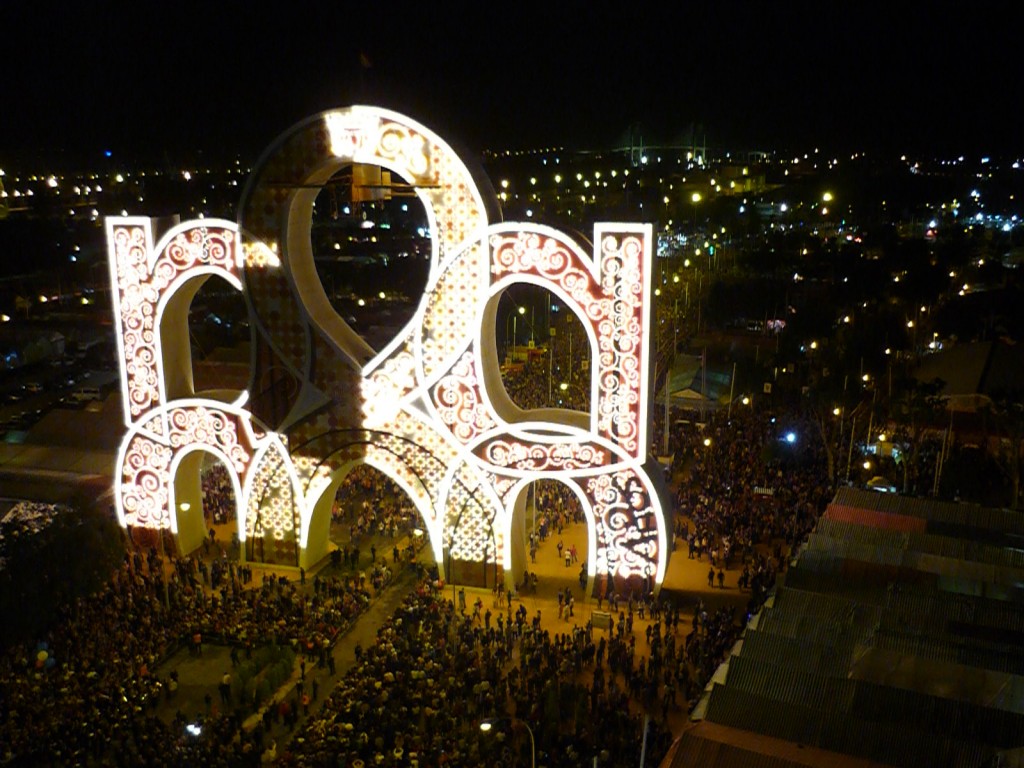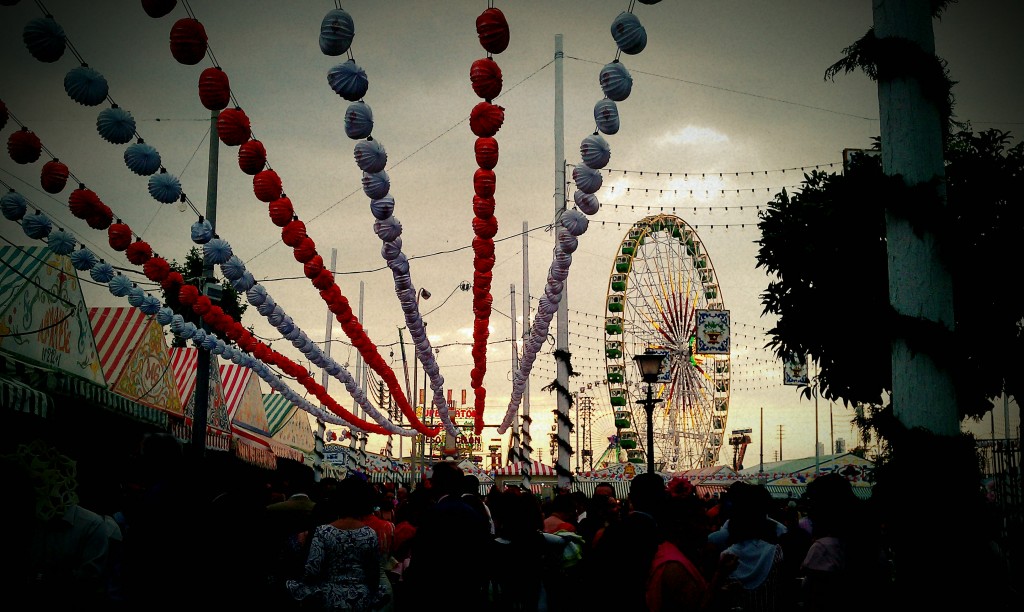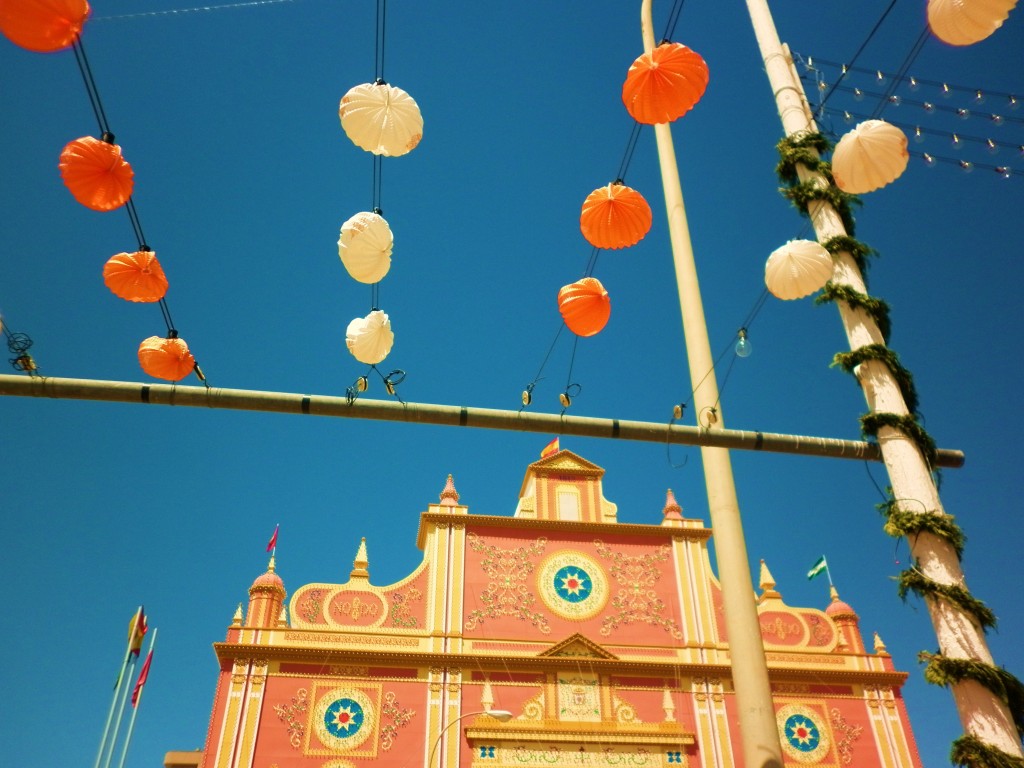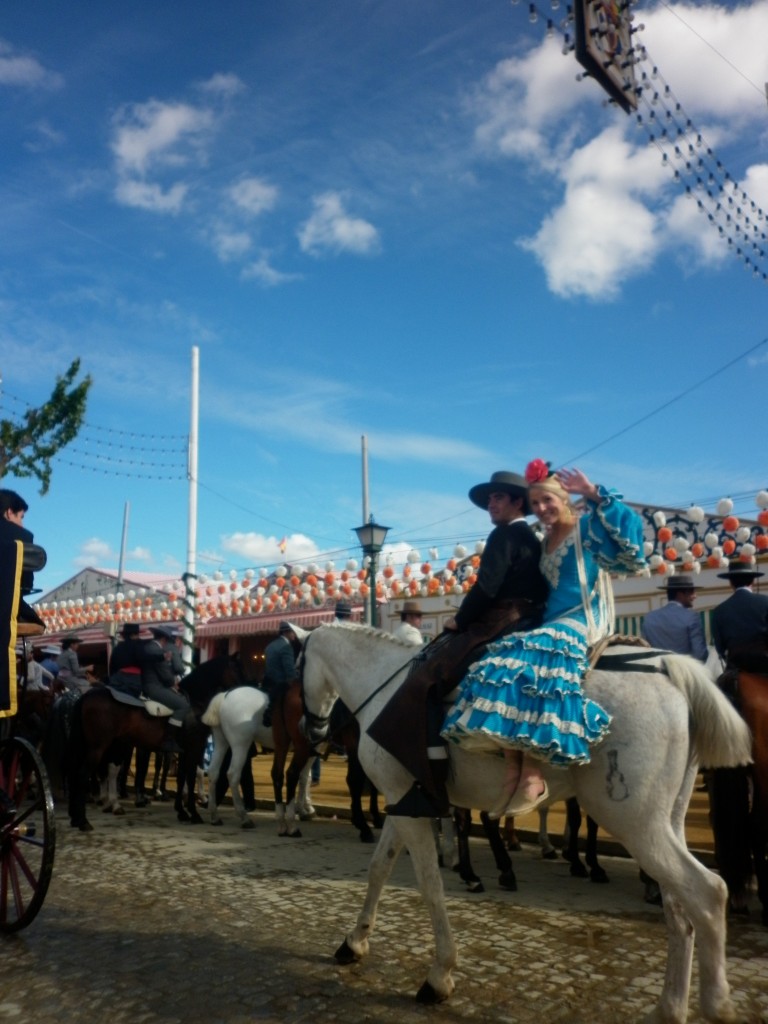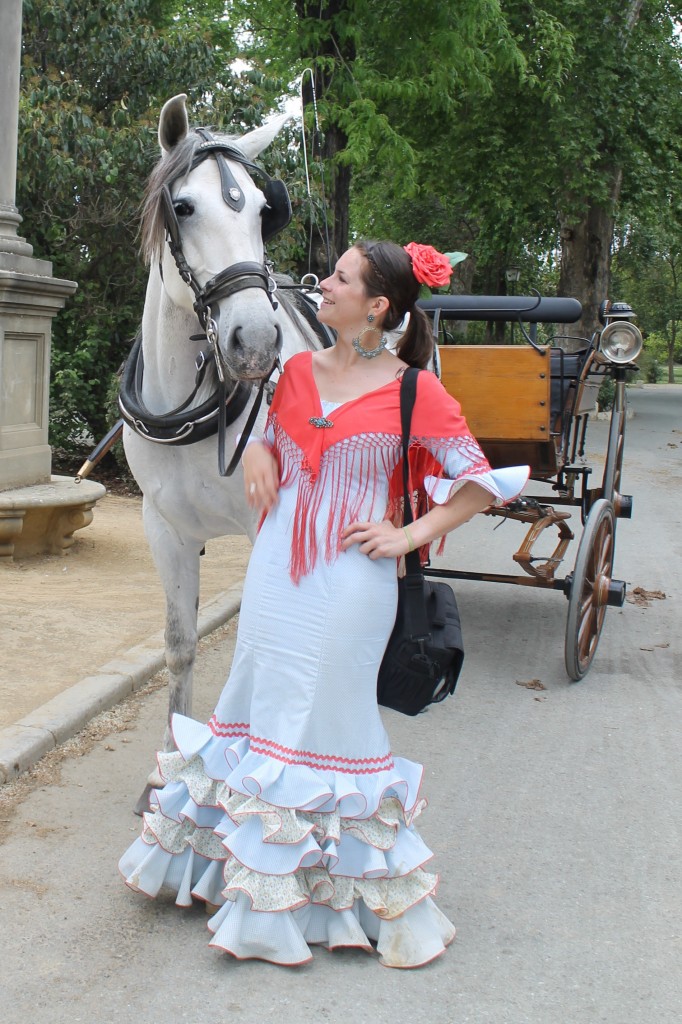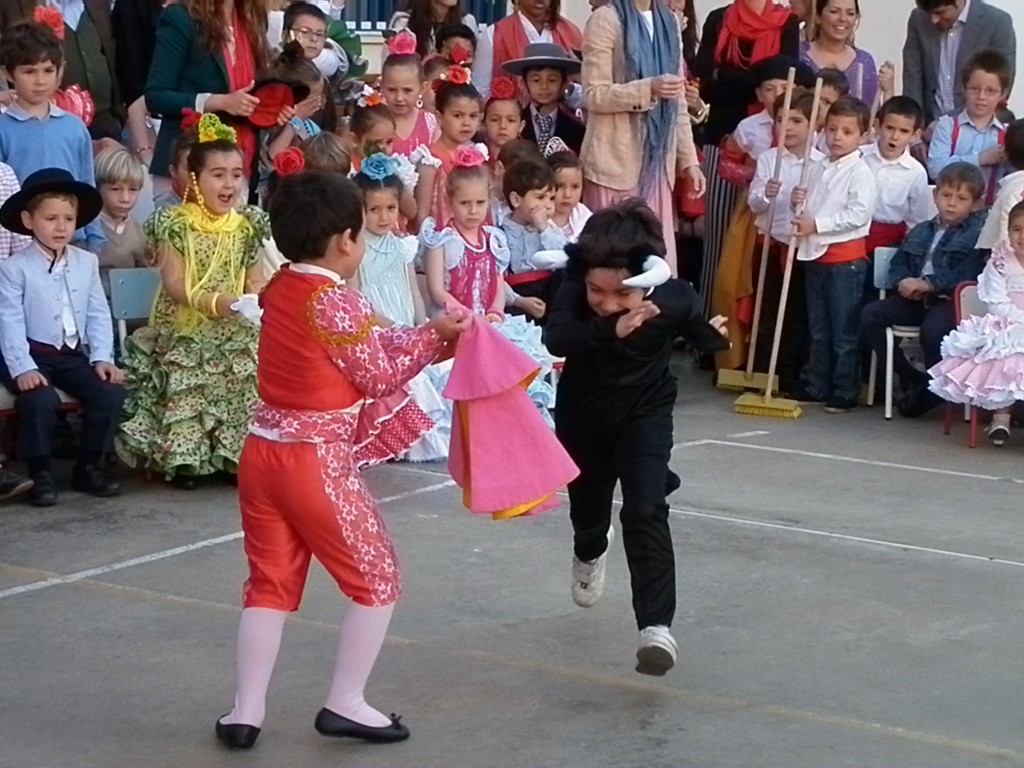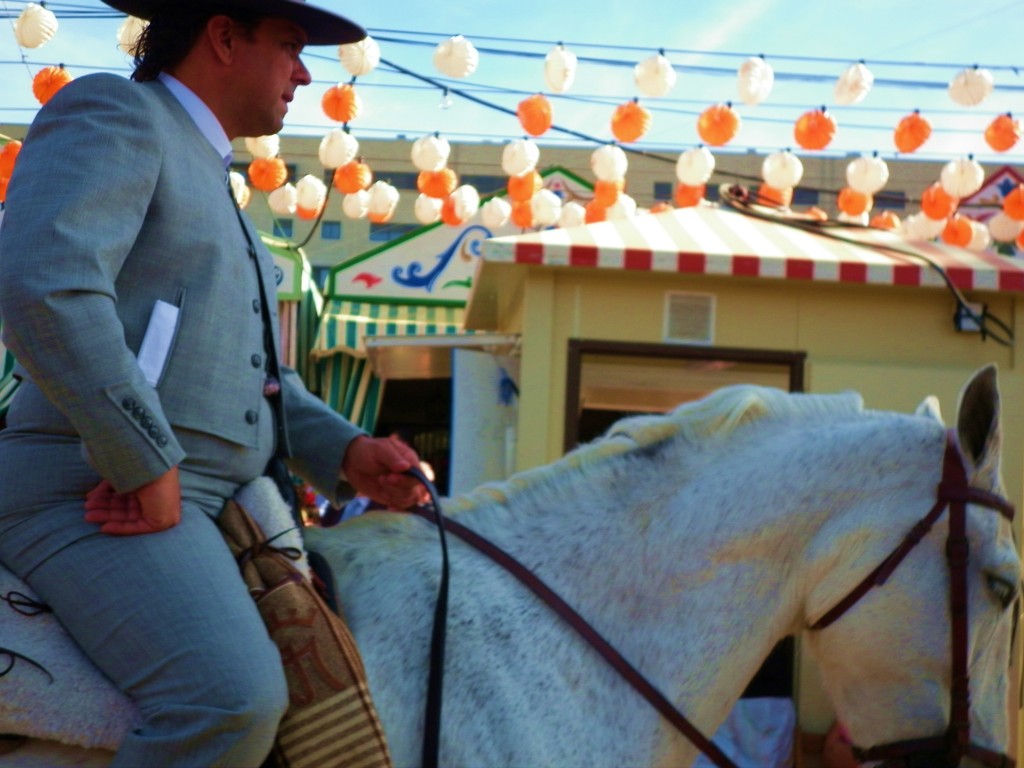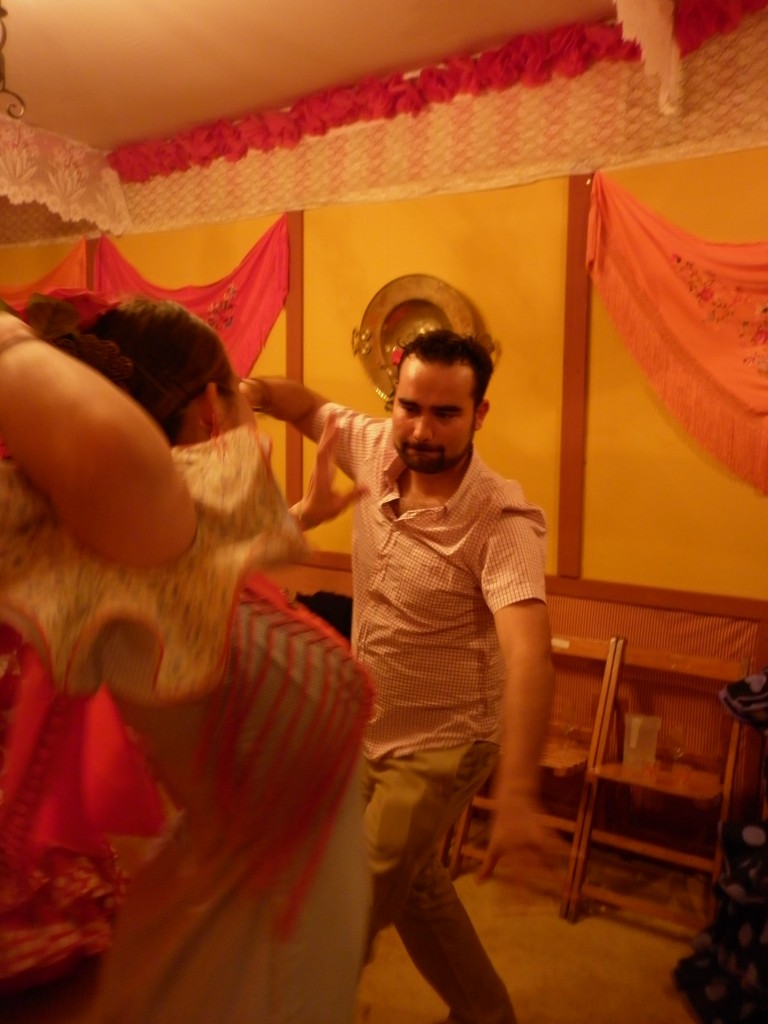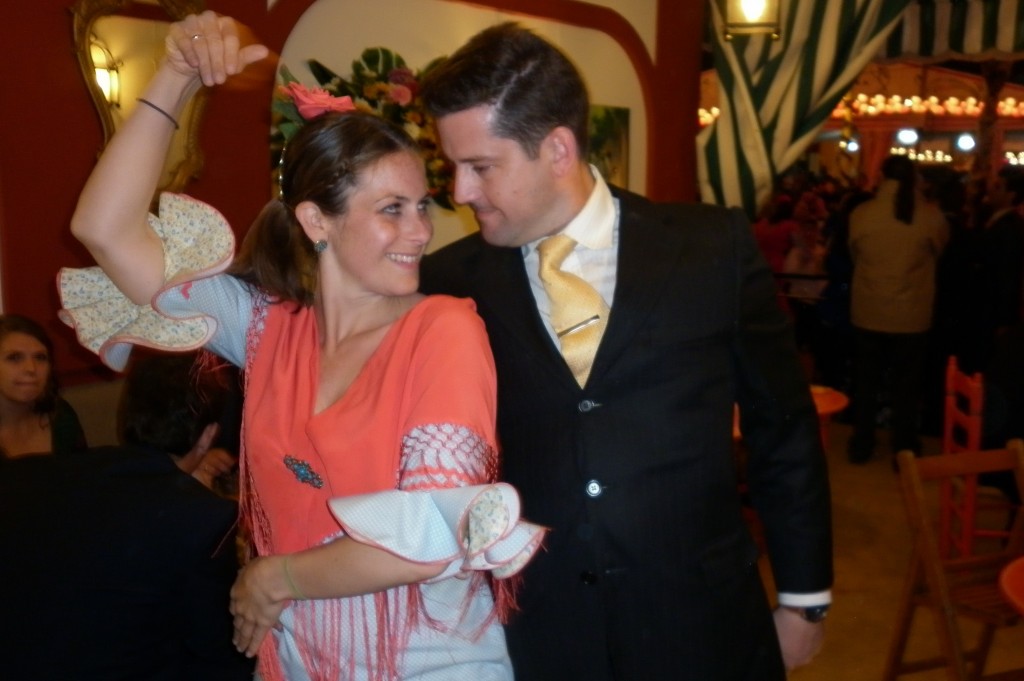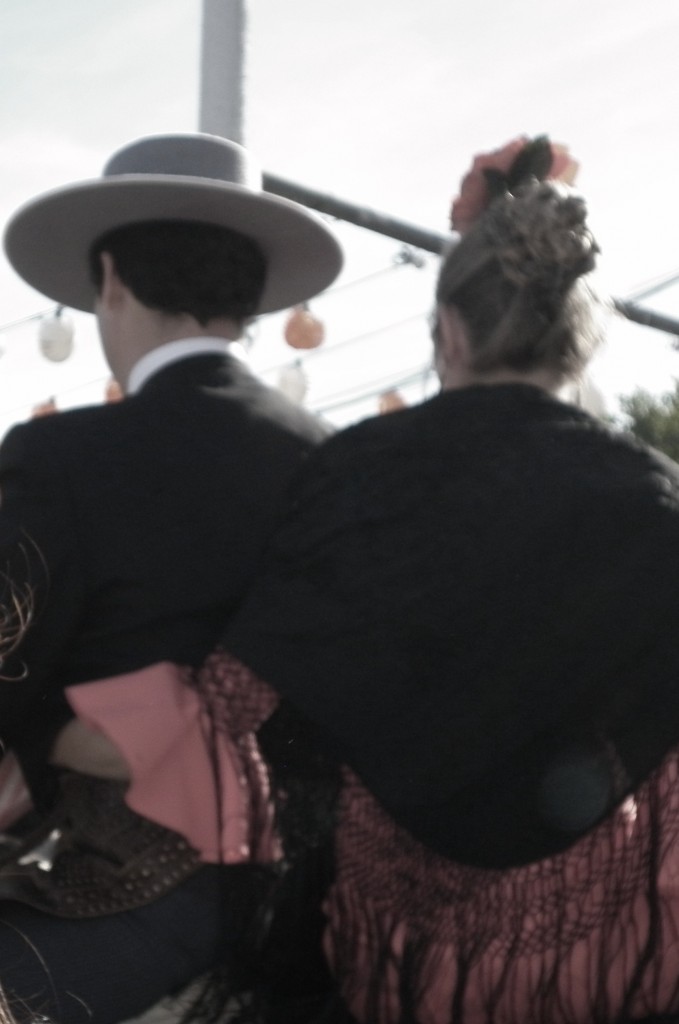Recently, Shawn of Azahar Sevilla and the mastermind behind Seville Tapas tweeted that I have a reputation of being feriante, a lover of Seville’s famous festival, the Feria de Abril. We may have only met briefly, but mujer gets me. What’s not to love about a week dedicated to revelry, horses, wine and curve-hugging dresses?
Two weeks after sevillanos have dried their tears after another washed out Holy Week, a makeshift city of temporary tents is erected at the southwest end of the city. Known as the Real de la Feria, this pueblecito comes alive during six days of the year, from 9pm on the Monday two weeks after Resurrection Sunday to the following Sunday’s fireworks show.
The dizzying, vibrant week can be characterized by a whirl of polka dotted dresses, the jingle of horse bells and the sound of sevillanas, a type of flamenco music, and it’s one of Spain’s most well known festivals. But as a city deep-rooted in tradition, even the April Fair has its set of unofficial rules. I consider myself a fairly well-weathered feriante after eight years of teaching class after late nights, of using my enchufe to my advantage and of lasting through six days of partying.
DO bring your wallet
One of the biggest pitfalls to Feria is that it falls two weeks after Holy Week (my perfect excuse for traveling during 10 days). Feria is a wallet drain.
First is the costly flamenco dress and everything that goes with it – the flower, shawl, earrings and shoes. I got my most recent dress during the July sale season for a mere 125€ and the accessories, called complementos, cost me another 60€. Styles change de feria en feria, so some wealthy women get a new dress each year!
My caseta membership costs Kike and I 150€ a year (we alternate who pays, this year me toca, while he’ll pay the cheaper gym membership), and then there’s the food, the drinks and the need to buy a new pair of shoes when I dance the others right into the trash. Tapas are not served in casetas, but rather raciones that can be 6 – 12€, while a jarra of rebujito can cost up to 10€! What’s more, hotels and taxis operate on a holiday price, so rates will be sky-high like during Holy Week. City buses have a 2€ day pass, and they’ll extend working hours – look for the “Especial Feria” bus.
To keep costs down, I usually eat lunch at home and walk to the fairgrounds and always ignore my dwindling bank account for the sake of un buen rato. Feria only comes once a year!
DON’T only see Feria by night
The fairgrounds open daily around 1p.m. and most casetas stay open until the wee hours, meaning the Feria de Abril is an exercise in stamina, and not just for your wallet. My first few years in Seville, I worked outside the city and therefore had to run home, change into my traje de gitana, eat and get to Calle Gitanillo de Triana. I’d alternate dancing sevillanas with sips of rebujito and riding the carnival attractions in Calle del Infierno, arriving home in the early morning hours and collapsing in my bed hoping to get a few hours of sleep.
I may have inadvertently taught my high schoolers the word “hangover” in English my second year in Olivares.
There are two different sides to the fair – during the day, horse carriages and riders crowd the streets, even parking their horse next to their caseta and drinking sherry by the glass atop the stallion. Music spills out of the tents at all hours, and kids roam the streets with plastic toys and cotton candy the size of their torsos. The ambience is festive and cultural.
As night falls, the carnival rides at the Calle del Infierno begin to light up, and the round paper lanterns, called farolillos, come on. While you’d be pressed to find a caseta that isn’t playing a rumba or sevillana, everyone switches from rebujito and beer to mixed drinks, and casetas are often open all night long. I’ve had mornings where I’ve ended the long day of partying with chocolate con churros!
I’m also partial to weekday visits. During Friday and Saturday, other villages in the area get a day off to enjoy the fair, which means that it’s difficult to walk and navigate around the streets, all named for bullfighters.
DO dress up
Feria is the pinnacle of pijo culture – women will don the traditional traje de gitana, a tight, ruffled dress that cost upwards of 500€. If you’re not keen on dressing like a wealthy gypsy, be sure to look nice. I went to the alumbrado, the lighting of the main gate and the official start to the festivities, wearing ratty jeans and sneakers, not fully aware of how the event worked. I’ve since wizened up and now make it a priority to have a few nice dresses on hand in case there’s a chance of rain or I can’t bear wearing my traje.
If you’re a chico, wear a suit and tie. Caseta etiquette is very important, and you’ll be expected to follow suit (literally!). If you’re planning on riding a horse, a traje corto, a short jacket and riding pants with a wide-brimmed hat called a cordobés. I’ve ridden in horse carriages, but never on the back of a jerezano stallion, kind of my dream!
DON’T forget the caseta etiquette
Casetas are the temporary tents that act as houses, kitchens, concert halls and lounges during the Feria. Since the private spaces come at a commodity (there’s even a waiting list for when a family or organization decides not to continue paying), a certain type of behavior is expected – you can’t be overly drunk, improperly dressed or smoking within the walls.
One year, a friend of a friend was visiting, and I took them to the Novio’s friend’s caseta. This girl, K, was not sipping the lethal rebujito, but instead treating it like a shot. She bumbled around like an idiot and starting making out with the Novio’s youngest brother, causing quite an escándolo and getting us banned from the caseta.
There’s also an unspoken rule that you can’t bring your twelve friends with you. The Novio’s best friend’s wife, Susana, often encourages me to invite some pals, but I try and keep it limited to two, maybe three. Even my own caseta has a one-buddy-per-socio rule!
DO set limits on consumption
If Feria is a marathon for your wallet and feet, it’s no stroll through the Real for your liver, either. The drink of choice is rebujito, a refreshing mix of half a litre of dry sherry and 7-Up, and it is potent. The sugary drink is usually served in enormous jars and drunk out of plastic shot glasses or sherry glasses between friends. Drinking water and curbing the intake often helps, as well as getting some fresh air every so often. During my first year, the only kind of connection I had was in Los Sanotes, and Kelly and I made sure to be there every day. Susana’s uncle finally reminded me that there was more to Feria than one caseta out of over 1000, and a break in the dancing and drinking will allow you to take in the ambience.
Be sure to eat during the day, too. I usually don’t want to stop dancing for a montadito or fried fish, but spacing out your drinks and punctuating them with some heavy food like carrillada or tortilla will help you last longer.
DON’T be pesada with your contacts, and try and make them early.
Feria is a time when enchufe, the age-old connections game that lives and thrives in Seville – nearly all of the casetas are private and protected by a doorman. I usually have to say the name of the person who I’m meeting or offer to drag that person back to the door after I’ve found them to prove that I’ve been invited. Phone lines collapse and batteries run dead, or someone is too drunk to get to their phone. Make your plans with friends ahead of time to avoid the letdown of arriving to the fairgrounds and having to wander around while you wait for an invitation.
I’ve have several invitations to casetas where I’m brought food and drink outside, though I’ve never actually psychically been inside of them. But that’s alright with me…as long as there’s rebujito and a plate of ham waiting, that is!
While I’m busy with pouring over relaciones institucionales or dancing my brains out on Calle Gitanillo de Triana, here are a few of the articles I’ve written in the past about la semana más bonita:
How to dress up a flamenco dress
The Feria during the economic crisis
Paulina’s article on How to Enjoy Feria as a Guiri
Any other tips and tricks for enjoying the fair?
